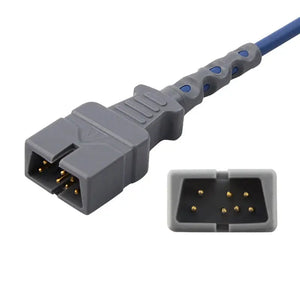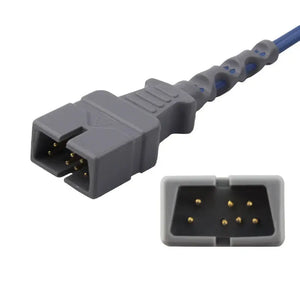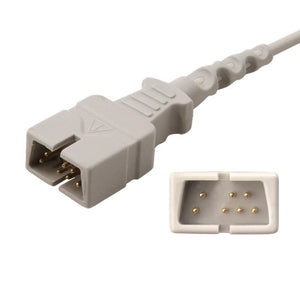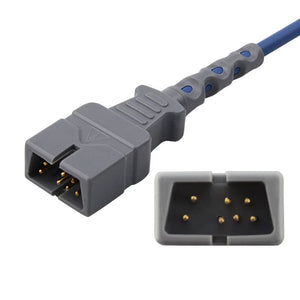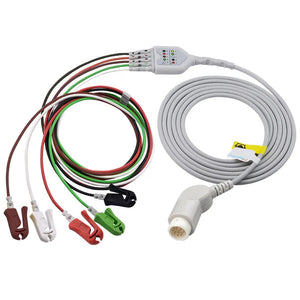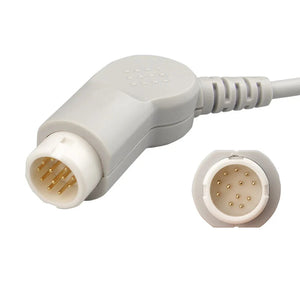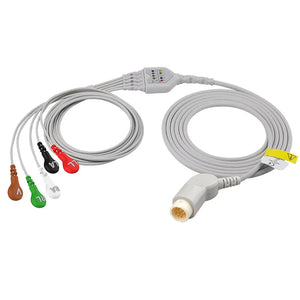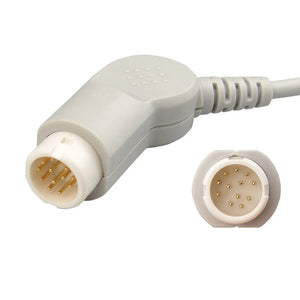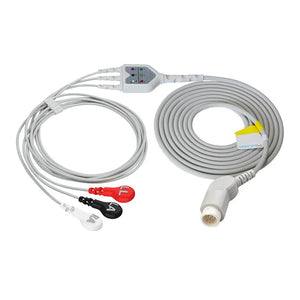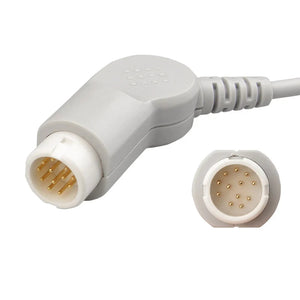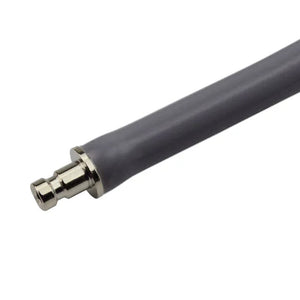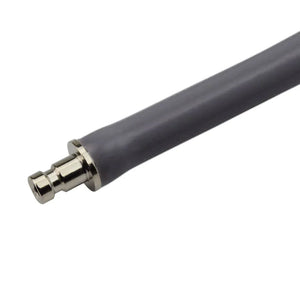A SpO2 sensor measures the oxygen level in the blood quickly and non-invasively. For instance, this small device clips onto a finger and provides real-time readings, thereby aiding in the early detection of conditions such as hypoxia.Normal blood oxygen saturation typically ranges from 95% to 100% in healthy adults.However, if it falls below 90%, medical attention should be sought promptly.
How a SpO2 Sensor Works
A SpO2 sensor functions similarly to a small flashlight paired with a light detector. Essentially, it uses light to assess blood oxygen.First, the sensor emits red and infrared light through the skin. Then, it measures how much light gets absorbed by your blood. As a result, it calculates the oxygen saturation level accurately.
- Light Emission: The SpO2 sensor sends red light and infrared light, which are invisible to the eye, into areas like your finger or wrist.
-
Blood Light Absorption:
- Oxygen-rich blood absorbs a greater amount of infrared light.
- Oxygen-poor blood absorbs a greater amount of red light.
- Oxygen Content Calculation: Subsequently, the sensor detects the unabsorbed light, analyzes the ratio, and displays the SpO₂ value on a screen.
In summary, the SpO2 sensor determines oxygen levels by transmitting light through the blood. For more details on pulse oximetry, check this Mayo Clinic overview.
| Wavelength | Oxyhemoglobin (HbO₂) | Hemoglobin (Hb) |
|---|---|---|
| 660 nm (Red light) | Less absorption | More absorption |
| 940 nm (Near-infrared light) | More absorption | Less absorption |
What Types of Sensors Are Used for SpO2 Measurement?
The core mechanism of any SpO₂ sensor involves the use of red and infrared light to detect oxygen levels. However, depending on the light transmission pathway, two main types of SpO₂ measurement methods exist.These methods are classified as transmissive and reflective types.Both aim to measure blood oxygen levels non-invasively and efficiently.
-
Transmissive Type (Light Passes Through the Body)
- Working Principle: The SpO₂ sensor is attached to thin anatomical sites such as the fingers, toes, or earlobes.In this method, light is emitted from one side and received by a photodetector on the opposite side.
- Blood Oxygen Measurement Logic: Oxygen-rich blood absorbs infrared light more, while oxygen-poor blood absorbs red light. Thus, the intensity of the transmitted light is used to calculate the absorption ratio.
- Suitable Areas: Fingers, toes, and earlobes are considered the most suitable sites./li>
-
Reflective Type (Light Bounces Back)
- Working Principle: In this configuration, the SpO₂ sensor is affixed to thicker areas such as the forehead or chest, where light is reflected back to a detector positioned on the same side.
- Blood Oxygen Measurement Logic: This method operates on principles similar to the transmissive type, although it collects data via reflected light rather than transmitted light.For illustrative purposes, this process may be likened to light reflecting off a mirror.
- Suitable Areas: Forehead, chest, and instep are ideal.
Ultimately, both types of SpO₂ sensors are designed to provide rapid and accurate measurements.The transmissive method is analogous to threading a needle, whereas the reflective method functions more like a mirror-based system. According to the FDA guidelines, always choose based on patient needs for best results.
Types of SpO2 Sensors
Disposable SpO2 Sensors
Disposable SpO₂ sensors provide both convenience and improved hygiene.For example, they help reduce the risk of infection in critical care settings. Additionally, they come in customized designs for various patients.
-
Features:
- Single-use to prevent cross-infection, ideal for neonates, ICUs, and operating rooms.
- Tailored to specific patient populations—such as neonates, children, and adults—for improved fit and measurement accuracy.
- No disinfection needed, saving time for staff.
- Applicable Scenarios: Emergency departments, operating theatres, and intensive care units (ICUs).
| Sensor | Population | Sensor Image | Order Code | Adapter Image | Order Code | Adapter Cable Image | OEM Part Number | Compatible Model |
|---|---|---|---|---|---|---|---|---|
| Comfort Foam Series (Non-adhesive) | Infant, Neonate, Pediatric, Adult |  |
605481632 |  |
605471632 |  |
Philips MP, MX, SureSigns series | |
| Elastic Fabric Series (Adhesive) | Infant, Neonate, Pediatric, Adult |  |
605471632 |  |
 |
0010-20-42710 | Mindray BeneView T, iPM, Benevision N, iMEC series, Some UMEC series | |
| Infant |  |
605371632 |  |
S0005MU-A |  |
JL-900P | NIHON KOHDEN BSM series, Lifescope | |
| Breathable Membrane Series (Adhesive) | Pediatric |  |
605261631 |  |
S0442CS-L |  |
Red LNC-04 Red LNC-10 Red LNC-14 |
MASIMO Pronto-7, Rad-5, Rad-57, Rad-87, Radical-7 with MASIMO module series |
| Adult |  |
605161631 |  |
S0190M-A |  |
TS-G3 | GE CARESCAPE, DASH series, B20/40 and other B series |
Reusable SpO2 Sensors
Reusable SpO₂ sensors offer durability and long-term cost efficiency.For example, these sensors are designed for comfortable wear and are capable of withstanding repeated use. However, they require appropriate cleaning and periodic calibration to maintain accuracy.
-
Features:
- Ergonomic design ensures secure and comfortable application.
- Designed to withstand hundreds of usage cycles; periodic calibration is required to ensure measurement accuracy.
- Provides lower total cost of ownership compared to disposable alternatives.
- Applicable Scenarios: General hospital wards or home care settings, provided that strict disinfection protocols are followed.
Explore options like the masimo spo2 sensor for pediatric needs. Similarly, check the nellcor spo2 sensor for reliable monitoring. For versatile use, consider the nellcor neonatal adult spo2 sensor.
| Type | Adults | Adults | Children | Infants | Newborns | Adults, Children | Adults |
|---|---|---|---|---|---|---|---|
| Sensor Picture |  |
 |
 |
 |
 |
||
| Use schematic |  |
 |
 |
 |
 |
||
| Application | Adults > 30kg | Adults > 30kg | Children weighing 10-40kg | Infants weighing less than 15kg (or fingers with thickness of 6~9mm) | Newborns weighing less than 3kg | Adults > 30kg | Adult > 40kg |
| Application Site | Adult index finger or other finger | Adult index finger or other finger | Child index finger or other fingers | Infant toes or thumbs | Neonatal sole of foot | Index finger or other fingers | Ear |
| OEM | # | Masimo 2644 | m1192a philips | M1195A | m1193a philips | # | OXY-E4-H |
Standard Operating Procedure for Using a SpO2 Sensor
Follow these steps for accurate SpO2 sensor use. First, ensure the device works properly. Then, select the right probe.
| A | B | C | D | E | F |
|---|---|---|---|---|---|
|
📊
Check the Device
Check the functional status of the pulse oximeter monitor.
|
🔌
Select an Appropriate Probe
Choose the probe type that matches the patient's needs; select disposable pulse oximetry probe types suitable for adults, children, infants, and newborns based on the applicable population.
|
🔗
Connect the Device
Connect the disposable pulse oximetry probe to the corresponding adapter cable, then connect the adapter cable to the monitor device.
|
🔒
Properly Secure the Probe
For adults or children, the probe is generally secured on the index finger or other fingers; for infants, the probe is secured on the toe; for newborns, the probe is usually wrapped around the newborn's ankle.
|
💡
Confirm Normal Operation
After connecting the pulse oximetry probe, check if the chip is glowing and wait for the results.
|
🔄
Regular Inspection
Change the probe's binding position every 2 hours to avoid the risk of pressure injuries and burns.
|
Common Usage Issues with SpO2 Sensors
Avoid these mistakes to ensure reliable SpO2 sensor readings. For example, improper placement can lead to inaccuracies. Additionally, always follow guidelines from sources like the World Health Organization.
| No. | Incorrect Use Cases | Risks | Correct Use Methods |
|---|---|---|---|
| 1 | Tie to the patient's wrist and ankle. | No result, inaccurate, burn | Different age groups have different monitoring positions. Adults and Pediatric: fingers and ears; Infants: toes; Newborns: soles of the feet. |
| 2 | Emitter position not aligned with receiver | Burning | |
| 3 | Patient weight and monitoring position mismatch | No result, inaccurate | |
| 4 | Use in sunlight or dappled light. | Inaccurate | Monitoring should be in dim light; close curtains in strong indoor light, or cover the sensor with black cloth or opaque tape if unavoidable. |
| 5 | Sensor and cables not properly secured. | Moving cables, shifting emitting and receiving tubes, reduced sensor life, no result. | Secure the monitoring site and fix the cables with medical adhesive or elastic tape. |
| 6 | The sensor shifts proximally due to insecure fixation. | No result, inaccurate | The emitting tube should be at the upper end of the nail; regular checks are required. |
| 7 | The SpO2 sensor and the cable are incompatible with the monitoring device. | No result, damaged cable | Use cables that match the same technology. |
What Is the Normal SpO2 Level in a Child?
In healthy children, the resting SpO₂ level typically ranges between 95% and 100%. However, newborns might range from 90% to 95%. During sleep, levels may temporarily decrease to 92%–93%.Persistent levels below 90% warrant clinical evaluation for potential underlying issues.At high altitudes, a decrease of approximately 2%–3% in SpO₂ is considered normal.
How to Increase SpO2?
Short-term interventions include maintaining an upright posture and practicing deep breathing exercises.For example, abdominal breathing may be practiced three times daily.In addition, maintaining indoor humidity at 40%–60% using a humidifier may support respiratory function.
In the long term, smoking cessation and immunization are recommended.Additionally, pulmonary rehabilitation programs—such as aerobic exercise—may improve oxygen efficiency over time.
Clinically, oxygen therapy in COPD patients aims to maintain SpO₂ levels between 90% and 94%.Underlying medical conditions should be treated with appropriate pharmacological interventions.
What Is Considered a Normal SpO₂ for COPD Patients?
In stable COPD patients, SpO₂ levels are typically maintained between 88% and 92% to prevent carbon dioxide retention.During exacerbations, levels may be increased to 90%–94% under medical supervision.If SpO₂ levels fall to ≤88%, supplemental oxygen should be administered for at least 15 hours per day.
Regular monitoring using a SpO₂ sensor is recommended.This should be complemented with arterial blood gas (ABG) analysis.Excessive oxygen administration should be avoided without professional medical guidance.


